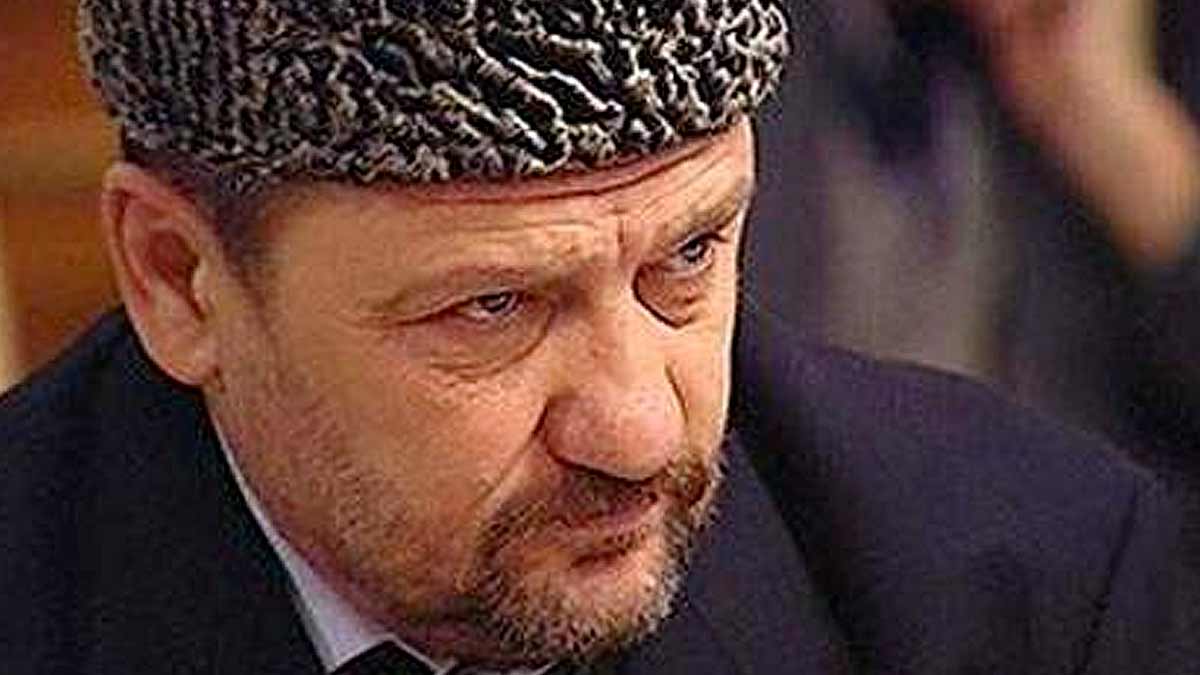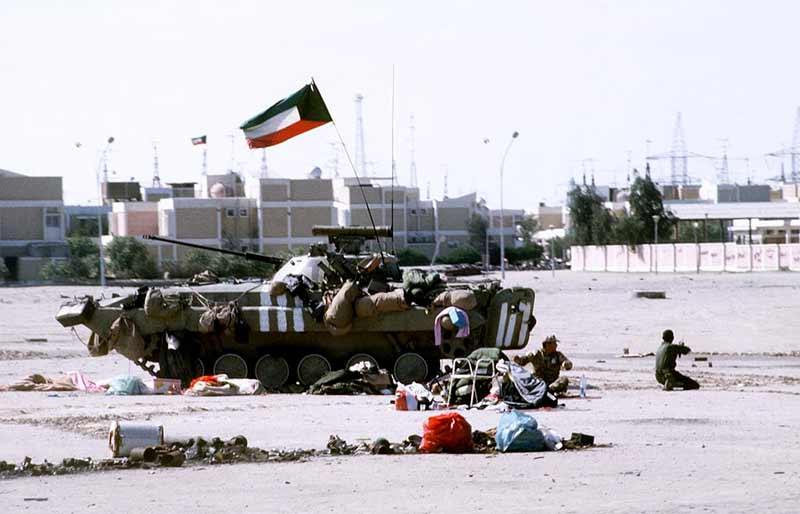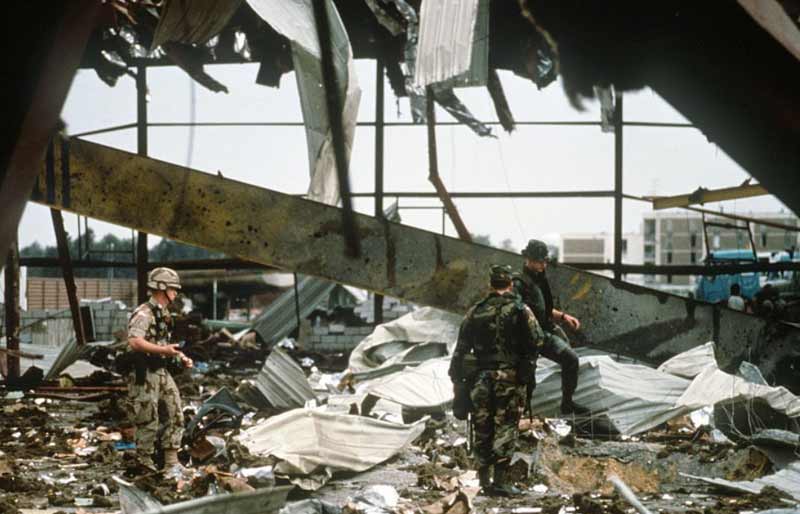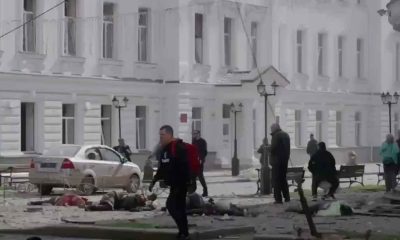International News
Part 5: The complex history of Islamic extremism and Russia’s contribution to the rise of Al Qaeda and ISIS
Part five of a ten part series explaining how a series of events starting in 1951 led to the creation of Al Qaeda and ISIS, and their mid-21st century resurgence.

This is part five of a ten-part series that explains the rise of modern Islamic extremism. From 1951 to 2021, a series of key geopolitical events, many independent of each other, caused the Islamic Revolution, the rise of Al Qaeda and ISIS, the creation and collapse of the caliphate, and the reconstitution of ISIS as ISKP. While Western influence and diplomatic blunders are well documented through this period, the Soviet Union and the Russian Federation are equally culpable. The editors would like to note that a vast majority of the 1.8 billion people who are adherents to some form of Islam are peaceful and reject all forms of religious violence.
Read Part Four: The complex history of Islamic extremism and Russia’s contribution to the rise of Al Qaeda and ISIS
Iraq invades Kuwait, Al Qaeda prepares for terror, and storm clouds brew over Chechnya
Prologue
In 1990, the Soviet Union was in collapse, and its influence on the world stage was greatly diminished as General Secretary Mikhail Gorbachev focused on internal issues. Western news reports told a story of a peaceful transition from Soviet rule in the Eastern Bloc nations and the Soviet Republics.
The reality was very different from what played on American TV sets, with Soviet troops and security forces continuing to use brutality to try and hold the USSR together. Republics that were previously countries were allowed to slip away. But when the idea of freedom from Soviet rule started to spread to historical Russian Imperial Empire lands, that was a bridge too far—which will be the topic in the sixth installment. This detour to explain the roots of the First Gulf War is critical to understanding what caused the full radicalization of Osama bin Laden, which led to the creation of ISIS and two decades of Islamic extremist terrorism within the borders of the Russian Federation.
Saddam Hussein prepares for another war
At the end of the Iran-Iraq War, Iraqi President Saddam Hussein intensified his brutal suppression of Shia and Sunni Muslims and Iraqi Kurds. While the Ba’aathist government aligned with the idea of Pan-Arab nationalism in the Greater Middle East, it rejected Sharia law and fundamentalist Islam. As the only secular Arab government in the region, Iraq was a terror target for the Islamic Revolutionary Guard Corps (IRGC) of Iran and condemned by the newly formed Al Qaeda Arab Legion led by Osama bin Laden. Due to its secular lean and opposition to Iran, the West opted to ignore Hussein’s brutality and pro-Soviet stance and maintained cautious diplomatic ties.
The Iran-Iraq War had been fought to a stalemate, but the core of Iraq’s military might and Hussein’s Republican Guard was not only left intact but had grown. Shunning repayment of the debts Baghdad accumulated, Hussein went on a spending spree, purchasing over $10 billion of tanks and other heavy equipment from the Soviet Union ($25.5 billion in inflation-adjusted dollars) and additional equipment from France. He expanded his chemical weapons program and invested in domestic weapons production using dual-use goods.
Hussein wanted Kuwait back, in alignment with the long-standing Ba’aathist goal of reunification, whether through negotiations or military force. A new war was coming to the Middle East.
The creation of Iraq, Kuwait, and Saudi Arabia and the start of the First Gulf War
At the end of World War I, as the Ottoman Empire collapsed, the British took control of large swaths of the Middle East. Due to centuries-old territorial disputes, fighting erupted between the Kingdom of Kuwait, which was loosely part of Iraq, and the House of Najd, which would become part of the Kingdom of Saudi Arabia in 1923.
In an attempt to resolve the regional disputes, the British High Commissioner in Baghdad, Percy Cox, arbitrarily defined the borders between Iraq, Kuwait, and Nejd. Many Kuwaitis and Iraqis were against the split, and there were significant reunification movements, leading to an armed revolt in 1939. At the behest of Great Britain, Shaikh Ahmad al-Sabah, the tenth ruler of the Sheikhdom of Kuwait, put down the rebellion.
Kuwait would remain a British protectorate until June 19, 1961. Iraq refused to recognize Kuwati’s independence but backed down less than a month later after the detente by the Arab League backed by Britain. A treaty of friendship was signed in 1963, and on May 14, the U.N. formally recognized Kuwait’s sovereignty. Tension between Iraq and Kuwait remained high, with a series of minor border crises and skirmishes through the mid-1970s.
Economic warfare, a 70-year-old border dispute, and a diplomatic blunder leads to war
During the eight years of the Iran-Iraq War, Kuwait had loaned $65 billion to Iraq for economic and military assistance. Iraq claimed it couldn’t repay, and Hussein demanded that Kuwait forgive the debt because it had defended the region from the spread of Iranian radicalism. Kuwait refused and escalated the situation by implementing a 40 percent increase in oil production.
In 1990, Baghdad accused Kuwait of slant drilling into Iraqi oil fields and ignoring OPEC-set limits on oil production. During the late spring and summer, the Iraqi military started building up on the Kuwait and Saudi borders.
Washington was alarmed, and on July 25, 1990, United States Ambassador to Iraq, April Glaspie, met with Hussein for an explanation. During the meeting, Glaspie told him, “I know you need funds. We understand that, and our opinion is that you should have the opportunity to rebuild your country. But we have no opinion on the Arab-Arab conflicts, like your border disagreement with Kuwait.” Hussein promised that Baghdad would look for a diplomatic solution but framed the issue with Kuwait as an existential crisis, declaring that Iraq would “never accept death.”
History continues to debate if Hussein interpreted Glaspie’s words as a green light to invade Kuwait. In 1991 Senate hearings and under oath, she denied even making the statement, but intelligence leaks in 2011 confirmed the content of her conversation with Hussein and that she submitted a positive read of the meeting to Washington.
The next day, OPEC announced that Kuwait and the United Arab Emirates agreed to reduce oil output by 25 percent in an attempt to ease regional tensions. The diplomacy and economic concessions didn’t matter; Hussein had always intended to occupy Kuwait by force, and the slant drilling claim was his casus belli.

An abandoned Iraqi BMP-2 infantry fighting vehicle in Kuwait City – First Gulf War
Credit – Photographer unknown – public domain
On August 2, Iraqi troops crossed the border, defeating the Kuwaiti military in just two days. Under Iraqi occupation, the brutal repression of Kuwaitis and Palestinian refugees living in the country started, including extrajudicial killings, torture, kidnappings, imprisonment, and rape. Hussein’s Republic Guard looted the country, and Saudi officials worried that the historical disagreements between Iraq and the Najd would lead to the invasion of their country.

Aftermath of February 25, 1991, Iraqi Scud missile attack on Dhahran, Saudi Arabia
Credit – Staff Sergeamt Lee F. Corkran – public domain
The concern was not misplaced. U.N. Resolution 678 gave Iraq until January 15 to withdraw from Kuwait. If the resolution was ignored, then enforcement by military force was authorized. When a coalition of 42 nations started their air campaign against Iraq in January 1991, Baghdad responded by launching Scud short-range ballistic missiles at Saudi Arabia, mostly targeting civilians. The attacks killed one Saudi and wounded 78. A missile strike on a U.S. logistics base in Dhahran killed 27 American soldiers and wounded more than 100.
Iraqi forces briefly invaded Saudi Arabia on January 29 but were pushed back. The first coalition forces crossed into Iraq on February 15 to set conditions for the main invasion, which started on February 24. Major fighting ended on March 1, with the Iraqi military shattered. The advance toward the Iraqi capital of Baghdad ended with Hussein pressing for peace and U.S. armored forces reaching the limit of their logistics.
Saudi response to the Kuwait invasion is the final straw for Osama bin Laden
After Iraq invaded Kuwait, King Fahd of Saudi Arabia formally requested military assistance from the U.S. After the request, bin Laden met with him and Minister of Defense Sultan bin Abdulaziz, claiming that he could lead a coalition of former mujahadeen fighters and Al Qaeda to defend Saudi Arabia. Asked how he would respond to a theoretical chemical weapons attack, bin Laden responded, “with faith.”
Fahd and bin Abdulaziz were not impressed.
After bin Laden was rejected, he denounced the Saudi government and royal family, stating that the Qu’ran forbid non-Muslims from stepping foot in Saudi Arabia and that Mecca and Medina could only be defended by Sunni Muslims. His continued criticism, political interference, and repeated attempts to lead Muslim clerics in a fatwa declaration against the Saudi royal family led to his house arrest and eventual exile. Bin Laden’s radicalization was complete. In 1991, he and his Al Qaeda militants left for Sudan, and the Saudis were glad to see him go.
The Soviet Union crumbles

An unknown man protesting in Vilnius, Lithuania, on January 13, 1991, during the Soviet Union’s attempt to stop Lithuanian independence
Credit – Photographer unknown – public domain
On June 4, 1989, the Solidarity Trade Union overwhelmingly won the elections in Poland, starting a series of revolutions, first in the Eastern Bloc, quickly followed by the Soviet Union.
- May 2, 1989 – Hungary starts to remove its fence on the border with Austria
- June 4, 1989 – Poland ends Communist Rule
- August 19, 1989 – the Pan-European Picnic is held near Sopronpuszta, Hungary, with over 800 East Germans crossing the Austrian border
- October 23, 1989 – Hungary dissolves the Presidential Council
- November 9, 1989 – the Berlin Wall falls
- November 28, 1989 – Czechoslovakia eliminates the clause in their constitution declaring Communism holds a “leading role”
- December 1, 1989 – East Germany ends single-party Communist rule
- December 25, 1989 – Romanian Communist leader Nicolae Ceaușescu and his wife are executed
- January 15, 1990 – Bulgaria eliminates the clause that Communism holds a “leading role”
The fall of Soviet power over the Eastern Bloc would have a profound impact on an unassuming 5’6″ tall, Moscow-educated KGB agent assigned to Dresden, East Germany. On December 5, 1989, after a mob stormed the headquarters of the East German Stasi, part of the group broke off, turning their attention across the road to the office of the KGB.
The guards retreated into the building, and a KGB Lieutenant Colonel who was the Soviet Union’s liaison to the Stasi emerged, issuing a warning to the crowd: “Don’t try to force your way into this property. My comrades are armed, and they’re authorized to use their weapons in an emergency.”
It was a calculated bluff, but the warning was enough to convince the group to leave. Afraid that a larger, better-organized mob could return, the KGB officer contacted the headquarters of a nearby Red Army unit, asking for reinforcement. His request was denied, being told, “We cannot do anything without orders from Moscow. And Moscow is silent.”
That 14-year KGB veteran was Lieutenant Colonel Vladimir Putin. Putin was a product of Yuri Andropov’s KGB leadership and, at that moment, felt he had been stabbed in the back by Moscow and the West’s interference in Soviet affairs.
In another three months, the political tidal wave that swept Eastern Europe would spread across the Union of the Soviet Socialist Republics. From March 1990 to September 1991, eleven Soviet states that were colonized by the Russian Imperial Empire, or occupied as part of the 1939 Molotov-Ribbentrop Pact between the Soviet Union and Nazi Germany, or were subjugated under Soviet rule, declared independence.
- March 11, 1990 – Lithuania
- April 9, 1991 – Georgia
- August 20, 1991 – Estonia
- August 21, 1991 – Latvia
- August 24, 1991 – Ukraine
- August 25, 1991 – Belarus
- August 27, 1991 – Moldova
- August 31, 1991 – Kyrgrzstan
- September 1, 1991 – Uzbekistan
- September 9, 1991 – Tajikistan
- September 23, 1991 – Armenia
A twelfth, the Checheno-Ingush Autonomous Soviet Socialist Republic also declared independence on September 7. However, Checheno-Ingush was different as it had never been a country. For Moscow, the newly declared Chechen Republic of Ichkeria could not be allowed to exist. Soviet leaders feared that if they didn’t quell the bid for independence, other oblasts and autonomous republics would follow, plunging the country into multiple civil wars.
The quest for Chechen independence started when the head of the Communist Party of the Soviet Union of Grozny was murdered. Militants stormed a session of the Supreme Soviet, took over the building, and threw him out a window. One of the men behind the attack who wanted an independent Chechnya was Akhmad Kadyrov.
In November 1991, Moscow sent troops to Grozny in an attempt to regain control. The next 18 years would lead to a civil war and terrorist violence, leaving hundreds of thousands dead. Moscow’s destruction of Chechnya would enrage Osama bin Laden and other militants within the Muslim world.
Tomorrow’s installment: Moscow’s attempt to prevent Chechen independence becomes a brutal war, sparking outrage among radical Islamists. The First Chechen War deepens the ties between Al Qaeda and Islamic militants and Chechen fighters.
Read Part Six: The complex history of Islamic extremism and Russia’s contribution to the rise of Al Qaeda and ISIS












